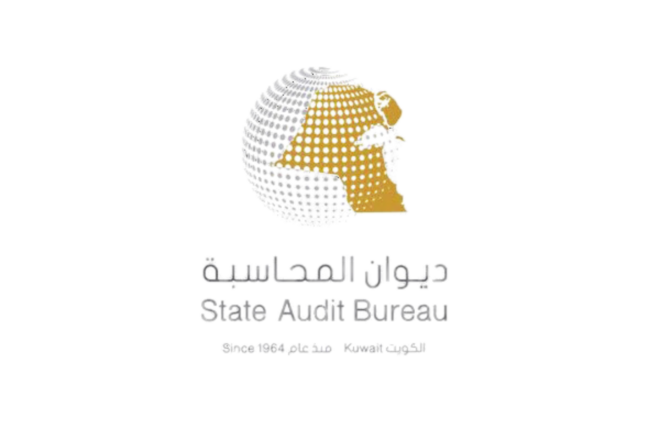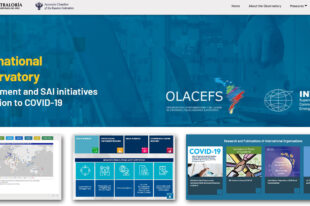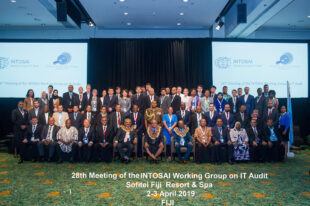Auditing Climate Change: Impact, Risk, and Resilience

Author: Dalal Alwuhaib, Auditor, State Audit Bureau of Kuwait
Introduction
The threat of climate change looms large in today’s world of rapid global change, altering the social, economic, and environmental landscapes at a rate never seen before. As the effects of this global catastrophe become more obvious, it is critical that communities and organizations fully recognize, evaluate, and manage the risks involved. This thorough research uses real-world case studies and scenarios to provide a greater knowledge of this important topic as it investigates the key role that auditing plays in assessing the effect, risk, and resilience of entities in the face of climate change.
The Worsening Effects of Global Warming
All throughout the world, the effects of climate change are already being felt: Increasing frequency and severity of extreme weather events, shifting precipitation patterns, and rising global temperatures events have had a substantial impact on a variety of industries, including infrastructure, agriculture, and public health. These changes are real, visible phenomena that are altering people’s lives, economies and societies all around the world. They are more than simply theoretical concepts.
One devastating example is the 2021 heat wave, which ravaged North America’s Pacific Northwest, smashing temperature records and killing hundreds of people due to heat- related illnesses. Similarly, the devastating floods that plagued Pakistan in 2022 destroyed homes, infrastructure, and crops, affected over 33 million people and served as a stark reminder of the devastation that climate-related calamities can cause.
Climate Change Risk Assessment: An Essential Project
Examination Auditing is critical for evaluating and managing climate change risks. Entities can ensure their long-term sustainability and prosperity by identifying their vulnerabilities, assessing the possible impact of climate-related events, and developing measures to strengthen their resilience through thorough audits with risk assessments.
One noteworthy example of an efficient climate change audit is the City of Vancouver in Canada. In 2019, the city commissioned a comprehensive audit of climate change risk and resilience, which investigated how the city’s infrastructure, services, and vulnerable people might be impacted. The audit identified major hazards, such as the increasing frequency and intensity of heat waves, wildfires, and flooding, and made recommendations for improving the city’s resilience, such as improving disaster planning, funding infrastructure improvements, and launching targeted initiatives for marginalized groups. Another example is the Port Authority of New York and New Jersey’s 2016 climate change risk assessment. The research looked at how storm surges, sea level rise, and extreme weather will damage the region’s critical transportation infrastructure. As a result of the audit results, a comprehensive adaptation plan was developed, which includes initiatives such as increasing essential assets, upgrading flood protection systems, and extending emergency response skills.
Evaluation of Organizational Resilience: An Adaptive Route
Auditing can help organizations assess their resilience and develop plans to adapt to changing weather conditions, as well as discover climate-related threats. This comprises examining a community’s or organization’s ability to anticipate, tolerate, and recover from climate- related disruptions, ensuring its continued operation and supply of services.
Copenhagen, Denmark, is leading the way in climate change adaptation. In 2011, the city assessed its vulnerability to floods, heat waves, and other climate-related hazards as part of a comprehensive audit on climate change adaptation. The audit led in the development of a comprehensive adaptation strategy, which includes initiatives such as investing in green infrastructure, legislating energy-efficient building codes, and developing early warning systems for extreme weather.
In a similar line, the Dutch city of Rotterdam has gained recognition for its efforts to improve climate resilience. In 2013, the city conducted a climate change adaptation audit, which examined the potential consequences of storm surges, heavy precipitation, and sea level rise on the city’s residents and infrastructure. The audit served as the foundation for the city’s comprehensive adaptation strategy, which includes steps like as building flood defences, investing in green spaces, and developing community-based resilience projects.
Overcoming Obstacles and Considerations
While it is clear how important climate change audits are, there are several challenges and variables that companies must consider in order to conduct these critical examinations. The complexities and unpredictability of climate change estimates pose a significant challenge, making it difficult to correctly evaluate risks and develop practical adaptation measures. The auditing process may become increasingly challenging due to the dynamic and iterative nature of climate science, as well as the heterogeneity in regional effects.
Another consideration is the need for sector-wide coordination and collaboration. Climate change’s effects typically span organizational and jurisdictional lines, demanding collaboration among institutions to develop and implement comprehensive solutions. In this scenario, building partnerships and encouraging information flow can be critical.
Furthermore, there may be challenges owing to the financial and technical resources required for full climate change audits, particularly for smaller organizations, businesses or towns with limited budgets and capacities. Overcoming these hurdles may depend in major part on finding and exploiting financial resources, developing internal abilities, and recruiting outside aid.

Conclusion
To summarize, making climate change audits a top priority for a sustainable future, understanding and resolving the challenges posed by a changing environment necessitates audits of climate change impact, risk, and resilience. The case examples presented in this study demonstrate the immense value of thorough audits in identifying vulnerabilities, evaluating risks, and developing plans to improve resilience.
Climate change auditing must be prioritized by entities, as the effects of climate change intensify and become an integral part of their risk management and adaptation plans. This allows firms to ensure the long-term survival and profitability of their enterprises and communities while also better planning for the challenges that lie ahead. Now is the moment to act. By embracing the promise of climate change auditing, organizations and communities can take proactive measures to secure their futures, assist worldwide efforts to mitigate and adapt to this grave threat, and create a more resilient and sustainable world for future generations.





